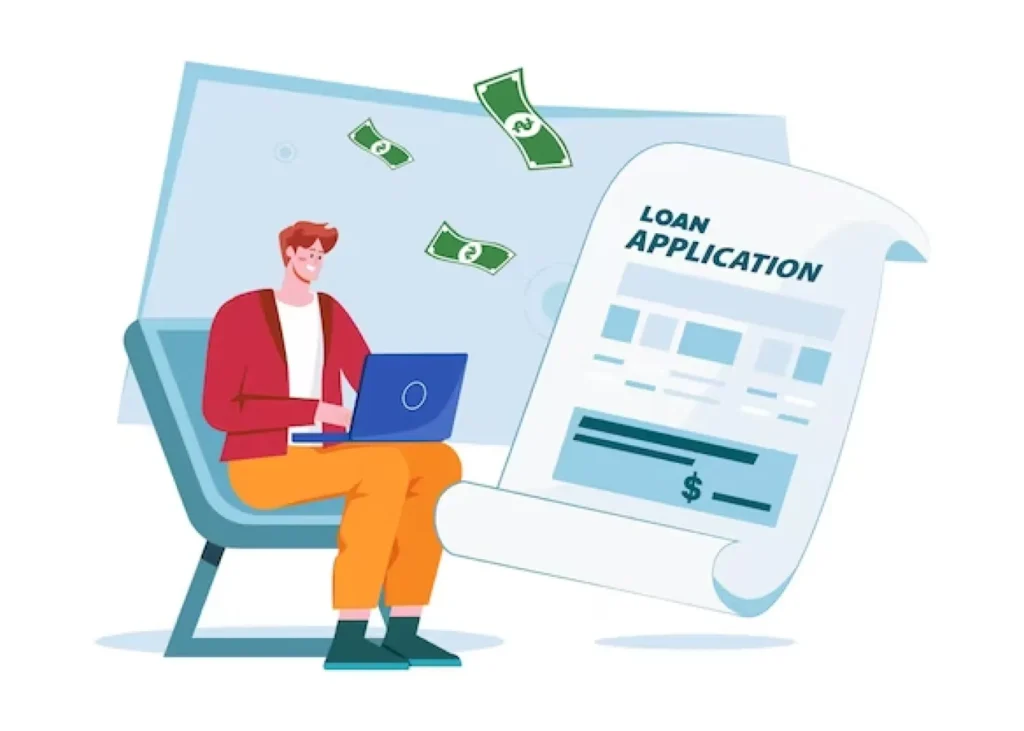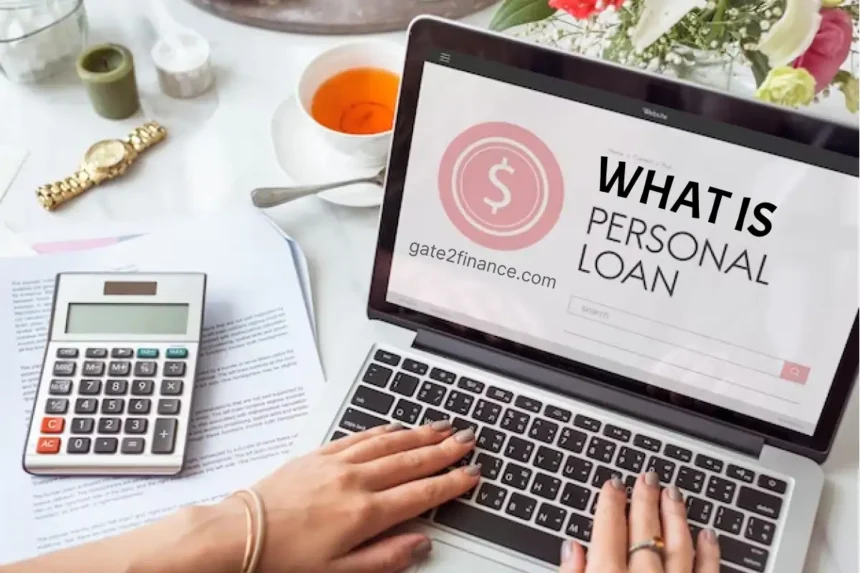What is Personal Loan?
Personal loans are unsecured loans offered by financial institutions based on factors such as history of employment, payback capacity, income level, profession, and credit history. its, also known as consumer loans, are multi-purpose loans that can be used to cover any of your urgent needs.
A personal loan is an amount of cash that you may borrow for a number of different reasons. For example, you may utilise a personal loan for consolidating debt, pay for renovations to your house, or arrange your dream wedding. Credit unions, banks, and online lenders all offer personal loans. Borrowed funds must be repaid over a period of time, generally with interest. Its may also be subject to fees from some lenders.
A personal loan is a loan from a financial institution that can be used for almost any purpose. Paying off loans, financing a substantial purchase such as a car or a boat, or paying the cost of a major outlay like as a wedding or a house renovation are all common causes. Personal loans are available from internet lenders, banks, and financial institutions, and the funds are provided in a flat amount. Once you receive the funds, you must make monthly installments until the obligation is totally repaid.
How a personal loan works
A personal loan allows you to get a large sum of money to pay for a variety of expenses and then repay that money in regular installments, or periodic payments, over time. For example, you may utilise a personal loan to cover moving charges, debt consolidation, hospital visits, wedding expenses, home upgrades or maintenance, funeral costs, vacation costs, and unexpected expenses.
Personal loans are distinct from other installment loans, such as student loans, car loans, and home equity loans, which are meant to support specified needs such as education, automobiles, or homes.
If you want to receive a personal loan, you’ll need to fill out an application and wait for approval, which could take anywhere from a few hours to a few days. When you are authorised, the lender will deposit funds into your financial institution’s account. You will also begin repaying the loan. Because your lender will most likely report your account activities to the credit agencies throughout the loan term, making on-time payments is critical to creating a positive credit history.
When seeking a personal loan, you will come across the words listed below.
- Personal loans charge customers a fixed APR, or yearly percentage rate, in addition to their principal loan amount. This APR is subject to change based on creditworthiness, income, and other factors. The interest rate on a personal loan dictates how much interest customers repay throughout the duration of the loan.
- Personal loans have a predetermined payment every month that you will make during the term of the loan, which is calculated by adding the principal and interest. If you agree to make payments off your loan over an extended amount of time, you may normally negotiate a lower monthly payment, albeit you will finish up paying in addition to accrual of interest than if you had a short payback period.
- Personal loan payback lengths vary, however consumers are frequently able to choose terms for repayment ranging from one to seven years. On larger personal loans, however, certain financial institutions may offer durations of up to 12 years.
- Origination fee – Some personal loans include a one-time origination fee in addition to the loan amount. While origination costs vary, it’s common to see them as high as 10% of the total amount of the loan.
Types of Personal Loans
While most personal loans operate in the same way, there are variances between loan packages and lenders. Here are the most common sorts of personal loans.

1. Unsecured personal loans:
Unsecured loans are those that do not demand any form of collateral. Lenders approve unprotected loans based on a borrower’s creditworthiness rather than a borrower’s assets. Personal loans, educational loans, and credit cards are examples of unsecured loans.
Unsecured loans, often known as signature loans or personal loans, are granted without the use of real estate or additional assets as collateral. These loans’ terms, including approval and the receipt, are frequently based on a borrower’s credit score.Unsecured loans typically require customers to have excellent credit. A secured loan, on the other hand, requires the borrower to pledge some form of asset as security for the loan. The pledged assets strengthen the lender’s “security” in making the loan. Mortgages and vehicle loans are examples of secured loans.
Because unsecured loans demand higher credit ratings than secured loans, lenders may enable loan applicants with poor credit to supply a co-signer in specific cases. If the borrower defaults, the co-signer assumes a statutory duty to repay the amount. This occurs when the borrower failed to repay a loan or debt’s interest and principal payments.
2. Secured personal loans:
Secured loans are commercial or personal loans that demand collateral as a requirement of borrowing. A bank or lender may need collateral for large loans where the funds are being used for the purchase of a specific asset or when your credit ratings are insufficient to qualify for an unsecured loan. Secured loans may allow consumers to benefit from cheaper interest rates since they pose less risk to lenders. Several types of secured loans, such as negative credit its and brief installment loans, may have higher interest rates.
Loans, whether personal or company loans, can be protected or unsecured. To acquire a loan with no collateral no guarantee of any type is necessary. Instead, you can borrow based on the durability of your credit score and financial history.Secured loans, on the opposite hand, necessitate the use of collateral in order to borrow. In some circumstances, the guarantee for a loan with security may be an asset purchased with the funds. When you get a mortgage, for instance, the loan is protected by the property you’re buying. The same is true for a car loan.
If you collapse on the loan, which means you cease to make payments, as well as the lender has the right to confiscate the assets that were that was used to guarantee the loan. In the case of a loan for a home, for example, the lender could launch a foreclosure procedure. The house would be auctioned off, with the money used to pay off the delinquent mortgage.
3. Credit-builder loans:
A credit-builder loan permits you to make monthly scheduled payments into a savings account. At the end of the period, the financial institution will return the account balance to you, maybe including part of the interest that you paid, and you will have improved your credit by having a solid payment track record. If you have bad credit or no credit history at all, a credit-builder loan may assist you build a track record of responsible financial behaviour without the use of a credit card. Here’s what you need to know.
A credit-builder loans works in a different way that typical personal loans do. Instead of obtaining an upfront payment from a lender, which you then repay over time, the financial institution places a portion of its own funds in a savings account.
You then make monthly payments to that account and have access to the remaining funds at the conclusion of the loan period. You will pay return on the loan amount, but the lender can give back a portion of the interest paid or the interest gained on your savings while in the savings account to you at the end of the term of the loan as “dividends” via credit unions. When selecting a credit-builder loan, ensure that you understand the interest percentage, any fees you’ll have to pay, and the financial institution’s policy regarding if you’ll receive the accumulated interest.
4. Specialized lenders:
Some service-oriented businesses provide personal loans to their consumers to help them afford their goods or services. If you want to buy an appliance, for example, a home maintenance store may offer you financing. These loans are usually convenient, but they do not always provide the best pricing and terms.
Alternatives to personal loans

Personal loans can be utilised for a variety of reasons, including emergency situations and major expenditures. A personal loan, however, might not be suitable for your financial condition. There are alternatives if you are unsure whether a it is the best option for you. Let’s take a closer look at seven its possibilities and present information to help you decide out what would work most effectively for you.
1. Credit Card
A credit card serves as a line of credit. Normally, you’re granted a credit limit as well as access to your financial line on a rolling basis. As you make settlements, you “free up” credit card space for future purchases. You only borrow money from this continuous line of credit when you need it. Depending on your circumstances, you can either pay off the balance on a monthly basis or pay it down over time.
It is crucial to understand, however, that if you hold an unpaid balance from month to every month, you will be charged interest. This charge may be more than what you might incur with a personal loan, based on your credit standing. However, if you can consistently pay down your balance, you’ll be less likely to have to worry about interest.
2. Personal Line of Credit
A personal line of credit works in the same way as a credit card. You can even possess a debit card that allows you to access your credit. A private avenue of credit, on the other hand, is normally linked to a financial institution, and you may need to link it to a savings or checking account.
Your money can be borrowed on a continuous basis, just like a credit card, and you may borrow (and repay) as required. However, the interest rate is usually lower than that of a credit card, and it may even be cheaper than that of a personal loan.
Rather of deciding how much you need in a flat sum, you are able to access funds as needed. Maintain a steady cash flow and deal with emergencies without having to apply for a new loan every time. Use the funds for reasons other than personal loans.
3. Home Equity Loan or Home Equity Line of Credit (HELOC)
If you own a property and have equity in it, you may be able to obtain financing against it for what you require. A home equity loan is often a one-time payment, and if you wish to get one again, you must complete an additional loan request. The home equity line of credit (HELOC), on the other hand, works equivalent to a personal line of credits in that you can use what you need when you need it while only pay interests on what you use.
Depending on the circumstances, you may be required to undergo a house appraisal to establish the amount available for the loan or secured line of credit. Because of the documentation, it may take longer to get accepted for a loan against your home’s equity or a HELOC than for a personal loan. Many lenders, however, offer lower interest rates on a property equity loan or a HELOC than they do on a personal loan.
4. Payday Loan
Payday loans are renowned for charging exorbitant rates of interest and fees. However, for people who require instant money and can perhaps pay off their debts in a few weeks, they may provide immediate help in the event of an emergency.
To be eligible for payday loans, you must have a bank account and be able to demonstrate that you get regular paychecks from an occupation that is stable. Payday lenders are frequently prepared to extend the period of your loan, but you will normally be charged a fee. As a result, payday creditors have the potential to trap you in a cycle of debt with high interest rates. Payday lending is especially exploitative to low-income communities, survivors of domestic violence, and other vulnerable populations.
These loans are generally best avoided. Still, if you are in a short-term cash constraint and can return the loan without expanding it, they can be useful in a hurry.
5. Salary Advance
You may be able to receive an amount of your salary early rather than taking out a cash advance or borrow from your retirement savings account. These programmes, however, are subject to your employer’s policies. Some firms provide these programmes as advancement opportunities or enable you to speak with the office of human resources on an individual basis.
Depending on the programme, you may repay the advance in installments or all at once. Regulatory fees and additional costs may also apply. However, some programmes are free and can be an acceptable substitute to a payday loan. It is a quick way to receive the money you require, especially in an emergency. You may be able to participate in these programmes even if you have poor credit ratings or no credit record. Some programmes have no fees or interest charges. You may be able to gain access to the advance through an easy-to-use app.
Common uses of personal loans
There are a variety of reasons why you would wish to receive a personal loan, some of which are more financially sound than others. Among the explanations as to why you could think about getting a personal loan are:
- Consolidating existing loans and high-interest credit card balances onto a lower-interest personal loan may save you a bundle, especially if there is no origination charge.
- Medical costs – Before applying out a personal loan, attempt to negotiate a lower payment on your medical bills and check if a no-interest installments agreement is an option. If none of these options work, a personal loan may be able to help you pay off your medical debt.
- Improvements and repairs – A personal loan can be used for remodelling projects, home improvements, or necessary repairs such as installing new plumbing or rewiring your property.
- Unexpected costs – ideally the emergency savings fund should be enough to cover unexpected expenses such as an emergency for the family or a costly car repair. However, if you do not have enough funds to pay for it, a personal loan may help you get through a difficult financial situation.
- Large purchases – If you don’t have the cash up front to acquire a new computer, appliance, mattress, or other item, a personal loan can assist you. You can then repay the loan in tiny installments over time.
- Moving expenses – Moving to a new house can cost hundreds of thousands of dollars, particularly if you are moving a long distance. If you haven’t got the funds on hand, you can think about getting a personal loan to pay your moving costs.
- Vehicle financing – Auto loans are generally a better alternative for financing an automobile than personal loans because they often have lower interest rates. However, some people may opt to use a personal loan since they often don’t need an initial deposit or collateral.
- Tax debt – You may be able to pay your tax obligation in installments via an IRS installment arrangement. To evaluate your best alternative, compare the interest rate and costs on your loan to the fees and interest that you’d collect via an IRS installment plan.









